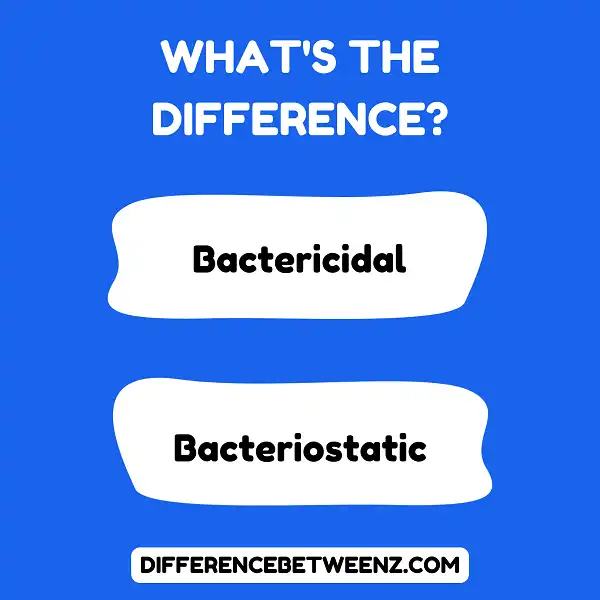Knowing the differences between bactericidal and bacteriostatic can help healthcare professionals provide better care to people suffering from infections or diseases. Bactericidal drugs work by killing bacteria, while bacteriostatic drugs inhibit their growth. In this blog post, we’ll explore both types of medications and discuss the benefits of each approach to treating bacterial infections. By recognizing the distinctions between these two classes of antimicrobials – and when they should be prescribed – medical professionals can ensure patients receive the most effective therapy possible.
What is Bactericidal?
- Bactericidal refers to something that has the ability to kill bacteria. Bactericidal agents are typically used to treat infections and conditions caused by bacteria.
- Bactericides can be chemical compounds, like antibiotics, or physical processes such as UV radiation or heat treatment – in essence, anything that has the power to destroy harmful bacteria.
- Bactericides can be found in a variety of products from cleaning supplies to cosmetics, and even on medical dressings used for wound healing. Bacterial destruction is key in protecting ourselves from nature’s most cunning microscopic predators!
What is Bacteriostatic?
Bacteriostatic is a quality of some substances which prevents the growth of certain bacteria by inhibiting bacterial reproduction. Bacteriostatic agents contain active ingredients or chemicals with antibacterial properties and are commonly used to fight against microbial infections in humans and animals.
Bacteriostatic agents work by disrupting the cell membranes of microbial cells, preventing them from reproducing. These materials can be administered orally, intravenously, topically (on the skin), or through inhalation. Bacteriostatic agents are extremely effective in curbing infection-causing bacteria, making them an important tool in both medical and sanitation practices.
Difference between Bactericidal and Bacteriostatic
Bactericidal and Bacteriostatic are two distinct methods of combating bacterial growth.
- Bactericidal refers to a substance that kills bacteria outright upon contact, while Bacteriostatic works by inhibiting bacterial growth instead.
- Bactericidal is often used for more serious infections due to its efficient capacity, as the bacteria are eradicated immediately with just one application.
- Bacteriostatic, in comparison, provides a longer-term solution where the product inhibits the spread of bacteria; though it is arguably less effective, it may be necessary for conditions which require long-term management.
For example, Bacteriostatic may be employed to inhibit a build-up of harmful bacteria in food products or environments where fast residue removal isn’t vitally important.
Conclusion
Both bactericidal and bacteriostatic drugs have their uses in treating infections. However, it is important to know the difference between the two types of drugs before administering them. Bactericidal drugs are more effective in treating active infections while bacteriostatic drugs are better suited for preventing future infections. If you have any questions about which type of drug to use, be sure to ask your doctor or pharmacist.


